How to properly shape your nails?

Every girl dreams of the perfect manicure. But sometimes the result is disappointing. And the color of the varnish is suitable, and the manicure is executed impeccably, but something does not please the overall picture. The reason for this may be the wrong shape of the nails. The final result largely depends on it. Let's figure out how to find your shape, as well as how to make it yourself.

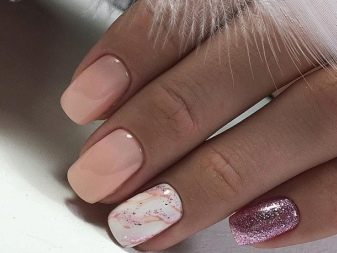
Shape selection
Previously, manicurists identified only four main forms. These were: a square, a triangle, an oval and a circle. Today the choice is much wider. Yes, some of them are very similar to each other, but they still have the right to their own name and existence. The choice of form depends on many factors. When in doubt which shape is perfect for you, look at the base of the nail. What is the shape of the cuticle? It can be oval, square, or even triangular. If you repeat its outline on the free edge, then the marigolds will look very organic.

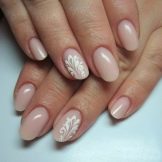
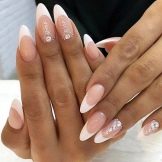

You are very lucky if the cuticle is oval. There are practically no restrictions on the choice. But do not forget about other features (fullness and length of fingers). If the base is a square, then your ideal shape would be a square and a slightly rounded shape (soft square). Well, for the owners of a triangular cuticle line, pointed forms (almonds, stylet) should be chosen. A good way to determine if your chosen shape is right for you is with a custom shape or tips.Ask the master to simply apply it to the nail bed. So you will clearly see the correctness of your own choice.
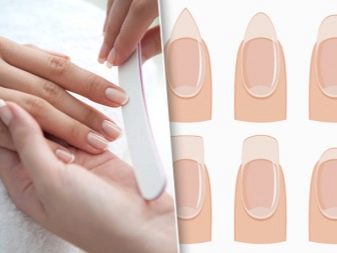
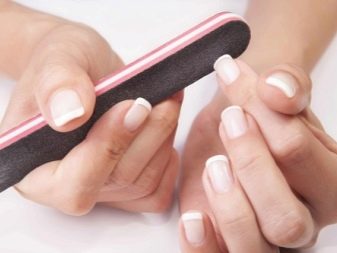
In addition to the above criterion, an experienced craftsman takes into account the following nuances:
- whether a manicure is performed on natural marigolds, is shellac used to cover, or the marigolds will grow;
- the individual features of the structure of the hand and fingers are taken into account (are they naturally long and thin and plump and short);
- client's wish;
- conformity of the chosen shape to the latest fashion trends.
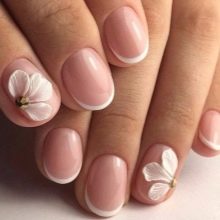
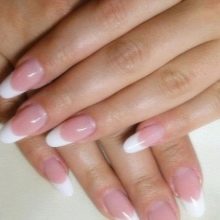
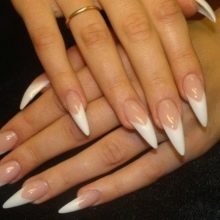
The round shape of the marigold is suitable for owners of a short nail plate. If you try to repeat it on long nails, you may experience a feeling of roughness and heaviness. For the owners of thin long fingers and elongated marigolds, you should not choose the stylet shape or other long sharp version. This will visually lengthen the toes, and they will look like "spider legs". The same long and pointed at the end. The shape of a soft or regular square will look harmonious.


Sharp forms like a stiletto or blade will perfectly complement the image of ladies with thin fingers, but having an average nail length. In this case, visual lengthening will only benefit. Among other forms, you can also safely try on a pike and almonds (the length should be more than average). Consider when choosing a certain form and the scope of your own employment. Since most professions in the modern world require working with a computer, you should take care of the ease of use of the manicure.
The ideal option is the shape of a soft square and an oval. Shapes that are too sharp will slide off the keys or break off as a result of constant hitting the keys. The classic square will also be unreliable, as sharp corners will cling and break off faster.

The current shape of the almond looks perfect on a medium-length nail plate. In this case, the size of the free edge should be greater than the average. On short marigolds, a narrowed and pointed shape towards the end will look ridiculous.
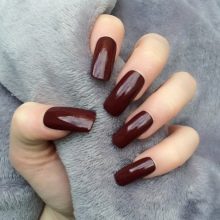
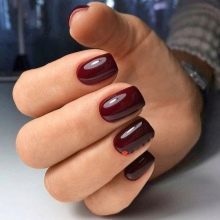
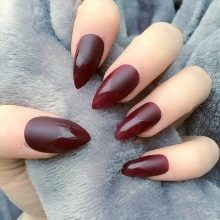
As for the unusual beveled shape (when the free edge has a pronounced slope to one side), then it can be embodied on extended nails. This option is quite vulnerable, so the nails must be very strong. The exoticism of this version of manicure also requires a certain courage from its owner. She is chosen by bright natures, as well as imposing and extravagant ladies. In addition to these basic rules and criteria, do not forget about the personal preferences of the client. The choice in this case will be due to temperament, personal preferences and your own idea of beauty.

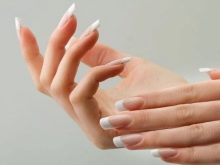

Required tools
A good manicure requires a good tool. Real masters of their craft know about this and never save on it. Let's try to list the main items that you will need.
- Forceps. They are used to remove cuticles as well as other skin growths. This tool should be well sharpened to gently trim away the stratum corneum and not tear it off.
- Scissors for manicure. Many people mistakenly use them to trim the free edge. But this is a rather delicate tool that will quickly deteriorate (dull) when working with rough materials (nail). They are needed to remove the cuticle along the growth line.
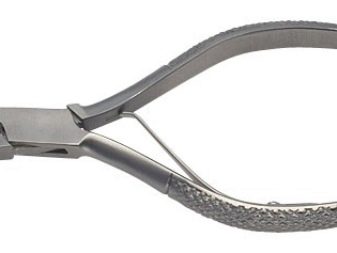
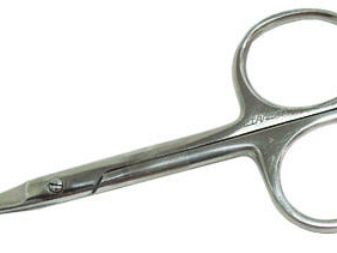
- File. Ideally, you should have 3 nail files of varying degrees of hardness. The roughest is used for extended nails. Softer for natural ones. They not only give the final shape, but also align the nail plate. The choice of material of manufacture depends on individual characteristics and preferences. Files can be ceramic, glass or metal.
- Wooden stick. It is needed not only to remove dirt from under the nails, but also for the cuticles. It plays an especially important role if you are performing unedged manicure.Then, with its help, the cuticle is not only given a shape, but also pushed back to the desired distance.
- Brush or large paintbrush. With its help, you can easily remove dust from sawdust from hands and nails. Professionals have a special fan that sucks in even the smallest particles, but at home you will have to be content with an ordinary cloth to wipe the dust.


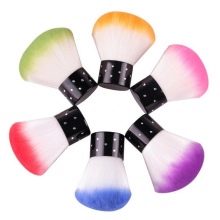
- Cuticle cream. More and more masters refuse to steam hands in a bath before starting a manicure. To make the cuticle soft and pliable, they prefer to apply a special cream on it.
- Buff. It will be needed at the final stage of nail preparation. With it, you can easily polish the nails and make them even and smooth.
These are the basic tools. But for the masters, this list can be supplemented by such specialized devices as a grinder, a table lamp, a fan vacuum cleaner, instruments for sterilizing instruments, a UV lamp, various brushes and trimmers, tweezers, pushers and more.
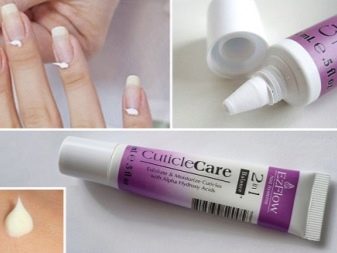
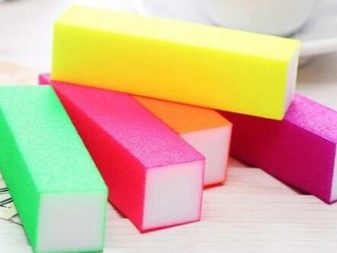
Preparing for the procedure
First of all, you need to prepare the marigolds, and only then give them the desired shape. To do this, it is enough to make a manicure in the way you are accustomed to. If you have a special tool available, then do a hardware manicure, otherwise you can do a classic trim manicure.
Prepare all the necessary tools that will be needed during the procedure. This will save you the hassle and search for the right file or tweezers in the process. Only start a manicure if you are sure that you have the necessary amount of time in stock. A hastily done manicure (or not finished at all) will look untidy and quickly deteriorate. Another important point that we have already mentioned is good lighting. If a special lamp is not available, then carry out the procedure in daylight near a window.

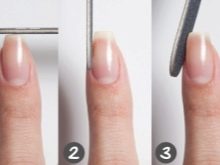

Basic rules for creating a form
As we have already found out above, the choice of the shape of the free edge largely depends on the natural design of the nail plate and the individual characteristics of the structure of the hand. But a skilled master is able to transform even the most ordinary-looking marigolds and give them an ideal shape. In this case, natural imperfections can be compensated or hidden by enhancing the nail with gel or design.
But there are also unshakable rules that you should adhere to if you want to create a beautiful and neat manicure at home. The main thing is to act step by step and not skip the stages of creation. After all, if, for example, you skip the degreasing stage, then the decorative coating will not adhere well, and the manicure will soon become unusable.

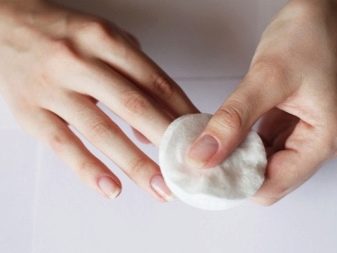
So, here are the basic postulates that masters use when creating a manicure.
- A manicure will look organic if all nails have the same shape. Today you can find fashionistas who specifically focus on one or two nails, giving them a different shape of the free edge. But this is more the exception than the rule. This choice is supported by a certain design.
- Same length. It is often possible to meet a situation when a girl has broken one of the already grown marigolds, but does not want to equalize everything under it. She ends up keeping it short and the rest long. This will not add beauty and sophistication, on the contrary, it will look funny. There are only two ways here: either trim the rest of the nails to the minimum length, or build up a broken nail. This is the only way your manicure will be aesthetic. Do not think that nail length is the main indicator of beauty.
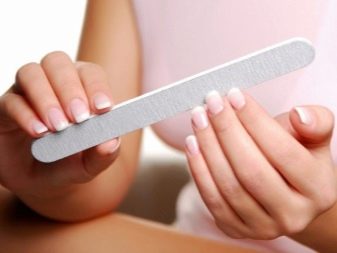
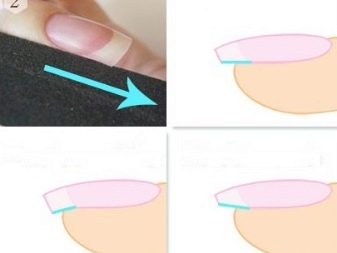
- Measure the length of your nail correctly. Each nail has its own size, so it is wrong to focus only on the length of the free edge. After all, if you make the same length of the free edge for the middle finger and little finger, then in the end they will look different.Measure the length from the bottom of the cuticle to the tip of the nail (including the free edge).
- To correctly determine the shape and length, use one finger as a reference. This will be the length of the nail bed that is longer than the rest. Only the little finger can be 3-4 mm smaller than the others (the thumb is either equal to or larger by 1 mm). The nameless, index and middle must be of equal length for the manicure to look organic.
- Another rule is the focus on the end result. A clear picture of what shape the nails will end up should be in your head. This will help guide the filing in the right direction.
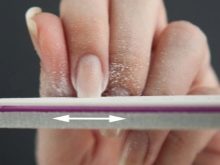
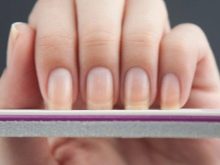
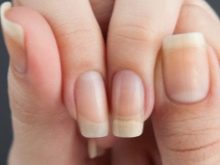
- Do not hurry. This is important not only so that you do not miss important points and do not miss shortcomings, but also for the marigold itself. If the sawdust is carried out very intensively, then the nail plate can be damaged. As a result, it will begin to exfoliate.
- Provide yourself with good lighting. The ideal option would be a table lamp that can be directed in the right direction and at the right angle. These are used in beauty salons. It is important for the master to see each nail and its smallest details.
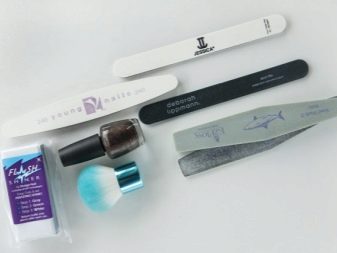
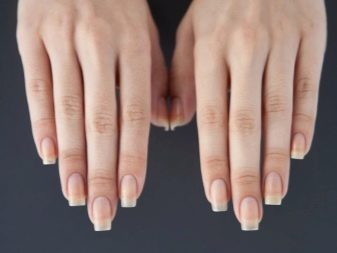
Technique of execution
Nail designers shape nails with a nail file. Its abrasiveness depends on whether the manicure is done on natural or extended nails. As for the technique of execution, then for each form there is its own technique. Moreover, even the same shape can be cut by different craftsmen according to their own script. Let's analyze the main types of forms and the technology of their creation.
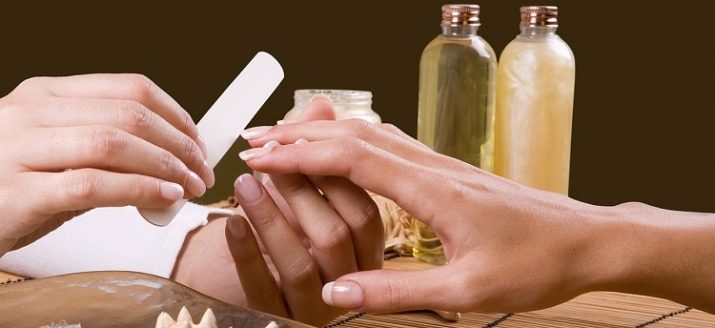
Round
One of the most natural and laconic forms. If you do everything right, then the shape of the free edge will follow the outline of the finger. This shape looks perfect on short nails. File all the nails to the same length at right angles. You will have a correct square. It is from this shape that it is easiest to create a circle with an ideal length and slope. Now, moving from the center to the sides, start cutting the sharp corners around the edges.
Make sure that the rounding does not turn into a narrowing of the nail. Moving from finger to finger, compare the results obtained and adjust as necessary.
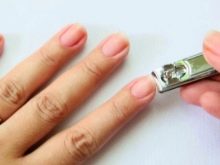
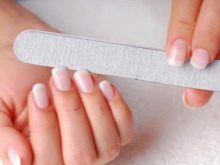
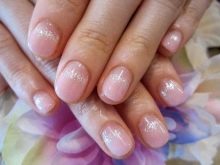
Square and soft square
If the nails are of different lengths, then first they need to be leveled. It can also be difficult if you had a pointed shape before. Sawed edges will prevent you from creating a regular square. Here you can advise either to choose the minimum length, or to give preference to a soft square with rounded edges. The sawdust is made at right angles. The edges should have a clear parallel to each other, that is, not even the slightest slope to one side or the other is allowed. All this will be visible.
For a rectangular shape, the corners can be left quite sharp. This is especially true for long nails. If you prefer medium to short length, a soft square is best. To do this, simply cut down the sharp corners a little, keeping a straight line on the main cut.
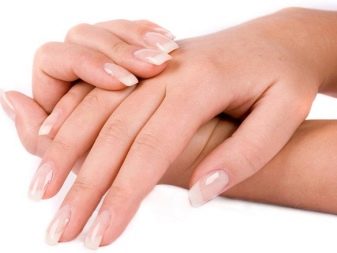
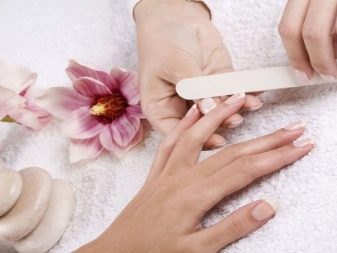
Almond
Oddly enough, this shape is also cut out of the square. Proceed as described above. The main task at this stage is to cut out a regular square. Next, start cutting the nail at a slight angle. At the end, you end up with a pretty sharp tip. Its shape is corrected at the last stage, rounding to the desired value. It is possible to start creating almond shapes without resorting to the intermediate square shape, but this is much more difficult. After all, you will need to adjust both the length and the slope, and clearly adhere to the center line so that there is no skew to one side.

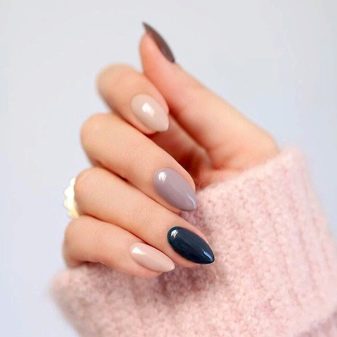
Stiletto (pointed marigolds)
Sharp marigolds, which are still often called "feline", require a rather impressive length of the free edge. It makes no sense (and impossible) to create such an exquisite shape on short nails.The basic rule for shaping the stylet to the nail is to correctly determine the central highest point of the nail. When you have filed all the nails to the desired length, you can begin to create a pointed shape. To do this, you need to move from the middle to the edges. Take your time, otherwise you risk cutting down too much. As a result, you should have a shape with tapered edges, going into a sharp tip. The smoother the transition from the smile line to the edge, the more organic the manicure will look.
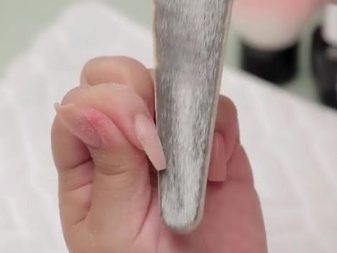
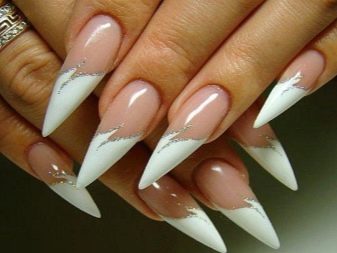
Oval
There are no special secrets and difficulties here. One has only to adhere to the unshakable rule of a short nail. That is, the length is determined by the size of the shortest of the marigolds. When the size of all the marigolds is corrected, you can start cutting out the shape itself. To do this, move from the center to the edges, creating a smooth arc (or oval). There should be no sharpening at the highest point of the nail, but there should also be no long, straight line.
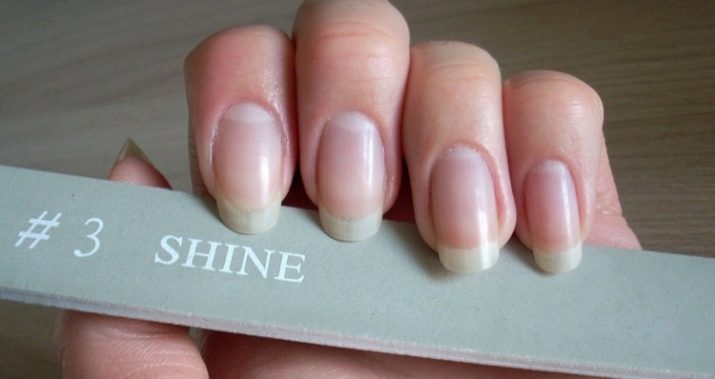
Correction of the nail plate
In addition to correcting the shape of the free edge, sometimes it is necessary to change the nail plate itself. The fact is that nature has not endowed everyone with a beautiful bend and the correct structure. The most affordable way to change the nail plate and set the correct growth trajectory is building. It should be noted here that the procedure must be performed by a professional. Only he will be able to do his job with high quality and provide the necessary correction.
The correction effect in this case occurs due to the rigid fixation of your nail in a certain position. Gel or acrylic will simply prevent it from growing in its usual direction. Additionally, arched modeling is also used.


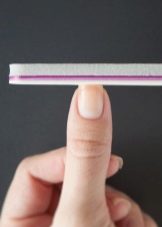

With its help, the desired bend is set. As a result, the marigolds have the correct shape. Changing it takes time for the nail to get used to growing in a given direction. But no one forbids getting rid of extended nails for a while so that theirs can have a little rest.
In addition, special devices for an ingrown nail and plate correction are often used on the legs. These are staples and surgical steel. With its help, the edges are raised and fixed. When worn for a long time, the shape and growth trajectory is corrected. In many ways, this is similar to braces that are placed on your teeth.
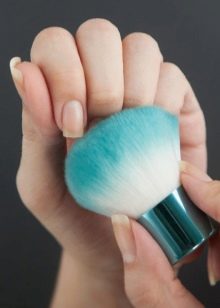
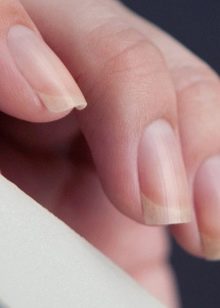
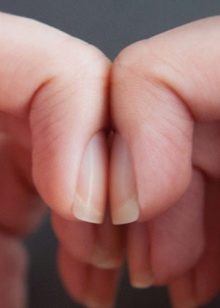
Tips from the masters
Take advantage of professional advice.
- Dry surface. The surface of the nail must be dry before starting the procedure. This rule is especially true if you are using steaming. To create the correct shape, it is necessary that the nail dries well, since its shape may change slightly under the influence of hot water.
- Don't cut too much. If the marigold already has the desired length and shape, then you should not additionally expose it to mechanical stress. Go over the surface of the nail plate with a buff to polish it. The same procedure should be done with a cut of the free edge. This will prevent delamination and breakage in the future.
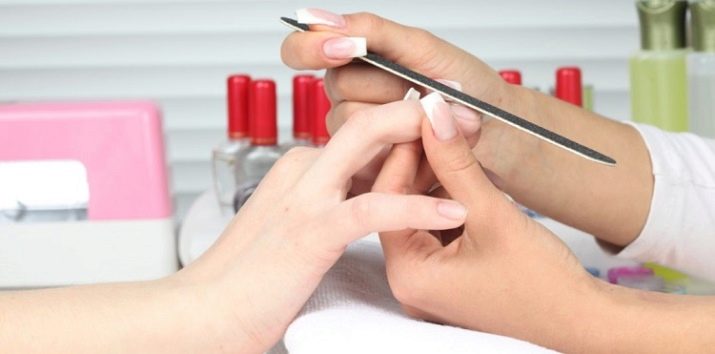
- Use of quality materials. If you do not have the opportunity to purchase everything you need, then it is better to contact the salon. After all, using materials and tools of poor quality, you only run the risk of harming yourself. In the future, it will take much more time and money to fix such errors. Craftsmen choose expensive quality materials not only because of their practicality, but also because of their safety.
- The frequency of the procedure. Don't forget to get your manicure done on time. If you prefer staining natural marigolds with varnish, then the procedure will have to be carried out quite often. When using shellac or build-up, the operating time increases. But even in this case, you will have to update it every 3-4 weeks, as your marigolds will grow back.
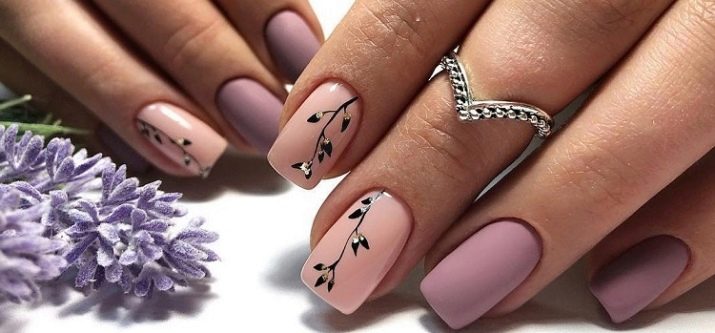
A beautiful manicure can be created both in the salon and at home. One has only to follow certain rules and use quality materials. Don't worry if you don't succeed the first time.After all, experience is also of great importance. It is worth a little practice, then you will get it very neatly and beautifully.
For information on how to properly shape the nails, see the next video.








